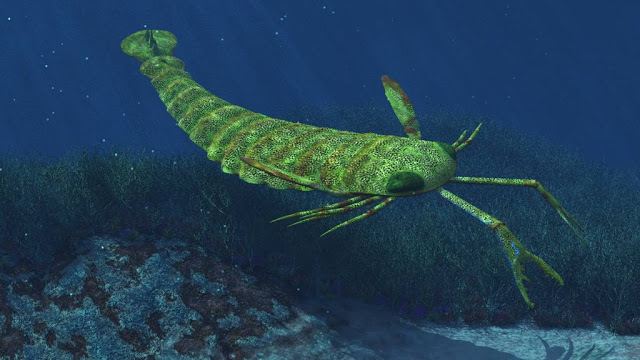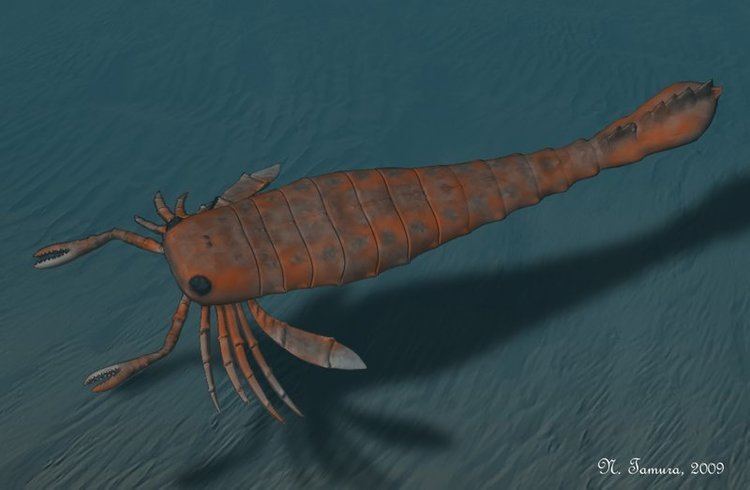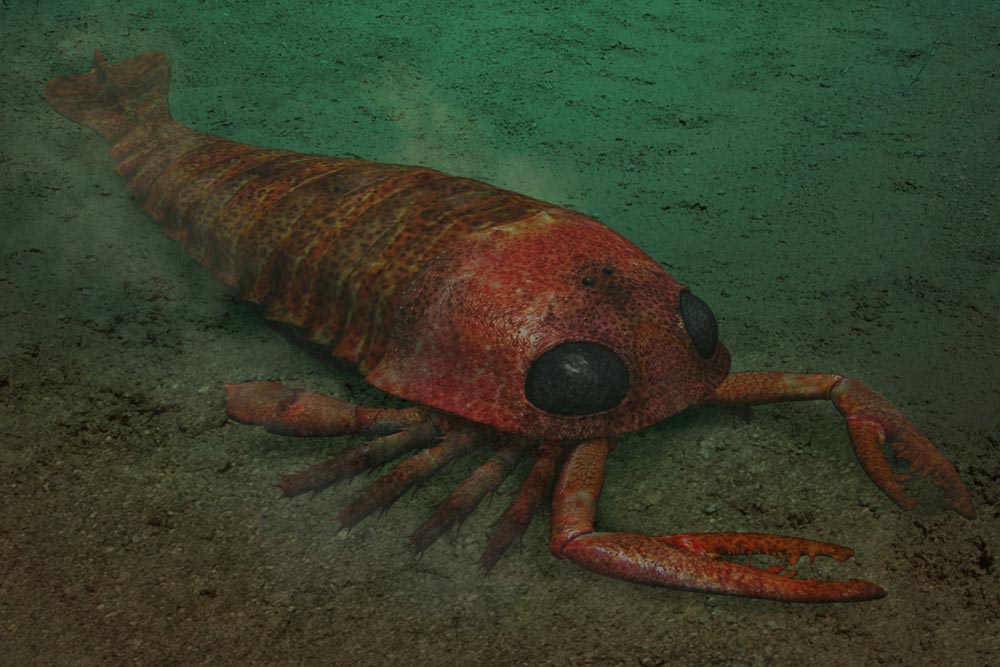Scientific name Pterygotus | Family †Pterygotidae Rank Genus | |
 | ||
Similar Eurypterid, Eurypterus, Arthropod, Brontoscorpio anglicus, Jaekelopterus | ||
Walking with monsters brontoscorpio and pterygotus
Pterygotus is a genus of marine arthropod within the extinct order eurypterida (or Sea Scorpion), and includes some of the largest species of this group.
Contents
- Walking with monsters brontoscorpio and pterygotus
- Description
- Ecology
- Stratigraphy and biogeography
- Species
- References

Description

pterygotid eurypterids, which lived during the early Silurian-Devonian periods, were characterised by small to large exoskeletons with semilunar scales. The telson (tail) was expanded, or flatter than it was tall. Pterygotids also had chelicerae (claws in front of the mouth) that were large and long, with strong, well developed teeth on the claws. Their walking legs were small and slender, without spines.

Pterygotus is distinguishable from other pterygotids by the curved distal margin of the chelae. The prosoma (head) is subtrapezoidal (a trapezoid with rounded corners), with compound eyes located near the edge of the front corners. The Telson has a pronounced dorsal carina (or keel) running down its center, terminating in a short spine.
Pterygotus could reach a body length of 1.6 metres (5 ft 3 in), had a pair of large compound eyes, as well as another pair of smaller eyes in the center of its head. It had 4 pairs of walking legs, a fifth pair modified into swimming paddles, and a pair of large chelae (pincers) for subduing prey. The foremost 6 tergites, or tail sections, contained gills and the reproductive organs of the animal.
Ecology
Pterygotus was an accomplished swimmer and could move with speed and agility through the water. It would swim by flapping its long, flat tail up and down; the broad, flat part at the end would push it through the water in much the same way as the fluke on the whale'S tail does. It would steer and stabilise itself using its legs. The larger pair of Pterygotus' eyes strongly suggests that it was a visually oriented predator. It used its paddles to swim, although it probably could accelerate by using its tail as a third paddle.
It was one of the top predators in the Paleozoic seas. It lived in shallow coastal areas, hunting fish, trilobites and other animals using stealth. It would have ambushed its prey by burying itself in sand. Then, when a fish or other unwitting animals came within range, Pterygotus would rise up and grab it with its claws.
Stratigraphy and biogeography
Pterygotus first arose during the Silurian period, and eventually died out during the early to mid-Devonian. It was related to the larger Jaekelopterus and the freshwater Slimonia. Fossils have been found in North and South America, Europe and Australia
Fossils of Pterygotus are relatively common, although complete skeletons are rare. It was one of the last of the gigantic sea scorpions: later species were much smaller and more nimble. The decline of the larger sea scorpions may be related to their relative slowness and possible vulnerability during moulting, since they could not escape to land like smaller sea scorpions. However, the latter is unlikely since Pterygotus was such a large creature.
Species
Species belonging to Pterygotus are the following:
